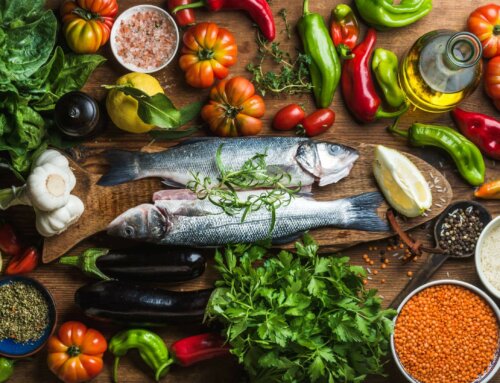I have recently shared a variety of nutritional hints and choices with my patients who were surprised to hear about these specific foods. Although this does not mean you may never choose these foods again consider eating less of them. I will try to offer reasons for my suggestions.
Always remember – whatever you eat, and whenever you eat – do it in moderation.
5 Fake Foods You Should Try to Avoid
- Imitation seafood/crabmeat salad – This prepared salad is often found in the seafood section of the grocery – it looks and smells like real seafood salad but it may not offer any of the real thing. Imitation seafood salad contains a majority of fillers with very little fish; a large amount of the fillers are carbohydrates, sometimes up to 14 grams for a ½ cup serving. You would assume this is a protein source since it is fish. These salads can also be laden with mayonnaise or dressing which can raise the amount of saturated fat; this increases your LDL or bad cholesterol and elevates your risk of heart disease. Although much more expensive, consider the real crab, shrimp or lobster in a smaller amount, mix with low fat mayonnaise or lemon juice and add fresh vegetables with whole grain bread or crackers to increase your portion and have a satisfying meal with little fat or fillers.
- Processed cheese is also a fake food worth staying away from. Many processed cheese foods have milk product concentrates and milk products that increase the carbohydrate count to almost triple the amount found in regular low fat cheese. Processed cheddar cheese has 3 grams of carbohydrate per ounce while real cheddar has only a trace. If it says “pasteurized prepared cheese product” it is not real cheese. Processed cheese is usually shiny, lacks real cheese consistency-almost waxy, has an artificial bright yellow color and does not really taste like cheese. Try to avoid cheese that comes in the squirt-can, artificial American sliced processed cheese or Velveeta. If you can not completely avoid them at least enjoy in moderation. Consider low fat cheese as a better option.
- Processed meats including sausages, salami, bologna and hot dogs (unless all beef/no fillers) are fake foods with many empty calories, fake coloring, artificial flavors and lots of saturated fat. Corn syrup is added for enhanced sweetened flavor which is not healthy especially if you have diabetes. Look for varieties that say nitrate-free, since meats with this preservative can increase cancer risk. Processed meats may also contain large amounts of carbohydrates (fillers) that are not expected in a protein source. Nitrates may increase the risk of diabetes and heart disease as well. Choose Canadian bacon or lean low sodium ham if possible.
- Whipped toppings may seem like an answer for added sweetness with a creamy topping to your dessert, but think again. Most of these toppings contain multiple chemicals with artificial flavors and colorings. They usually include hydrogenated vegetable oil which is considered a trans-fat. Trans-fat is connected with cardiovascular disease. Think about using a small serving of a real homemade whipped cream topping for flavor in moderation.
- Non-Dairy creamers (liquid or powder) – To lessen hunger and stay filled up I see many patients who drink decaf coffee throughout the day with artificial creamers. The creamers may seem convenient and innocent since they do not require refrigeration and even come in small single portion containers, but they are not particularly healthy. They contain hydrogenated oil, corn syrup, sugar and calories. Now and again they are fine but some patients drink 6 cups a day with 2-3 creamers per cup! Watch refrigerator flavored creamers even when they say “low fat or low sugar” as well. A little goes along way. Think about low fat 1-2% organic milk or Lactaid milk (if you are lactose intolerant) for a good healthy alternative (milk is a carbohydrate).
I would never say “never” to anything you may want to eat, but definitely try to make better and healthier food choices. When grocery shopping read food labels when possible, ask waiters or restaurant owners about ingredients, try apps including Fooducate on your smart phone for calorie counts and ingredients if available; this app grades products from an A-D scale. It also allows you to compare foods and make the best choice. You will feel better and your body will appreciate it too!
NOTE: Consult your Doctor first to make sure my recommendations fit your special health needs.






Leave A Comment